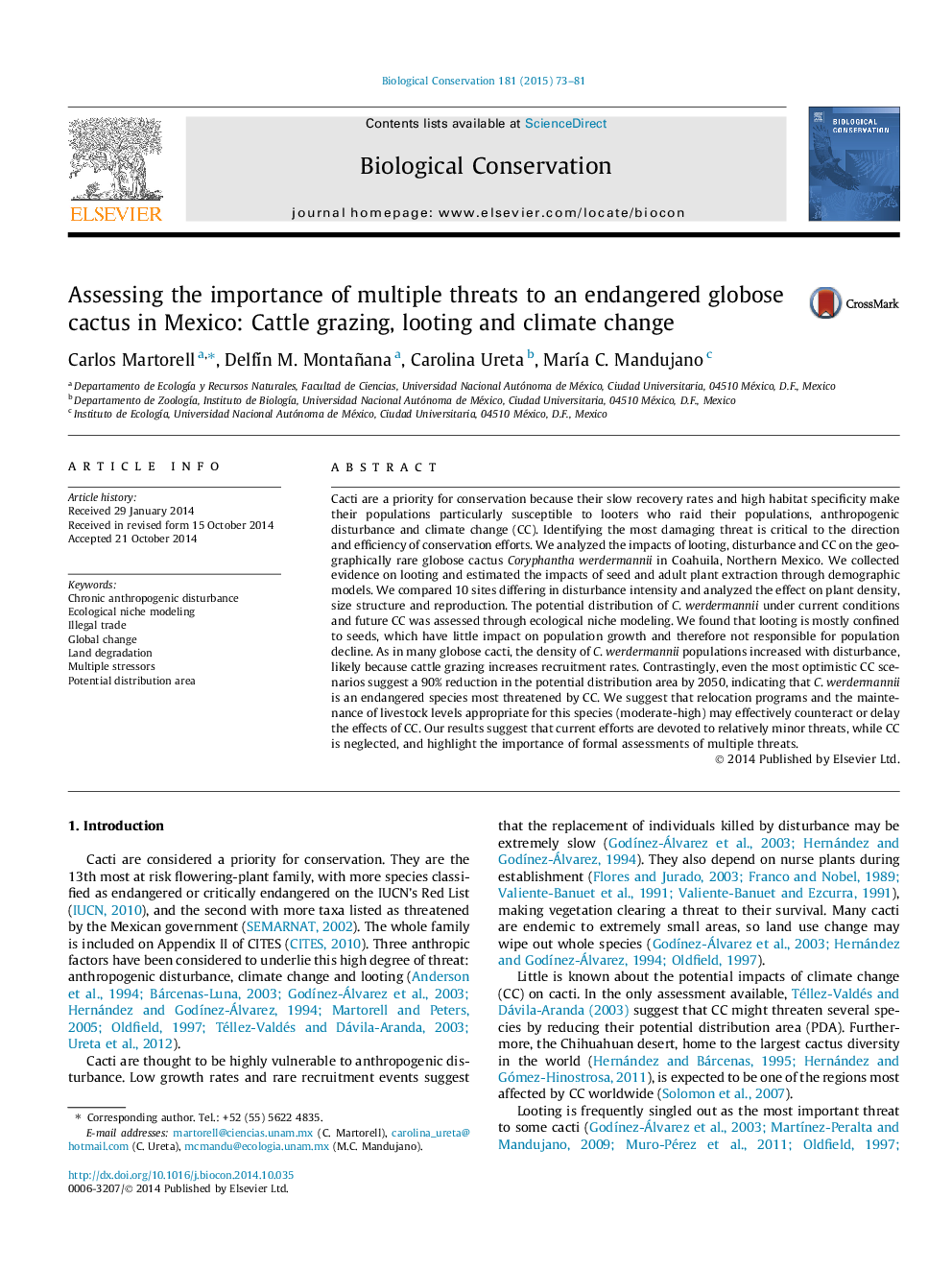| Article ID | Journal | Published Year | Pages | File Type |
|---|---|---|---|---|
| 6299375 | Biological Conservation | 2015 | 9 Pages |
Abstract
Cacti are a priority for conservation because their slow recovery rates and high habitat specificity make their populations particularly susceptible to looters who raid their populations, anthropogenic disturbance and climate change (CC). Identifying the most damaging threat is critical to the direction and efficiency of conservation efforts. We analyzed the impacts of looting, disturbance and CC on the geographically rare globose cactus Coryphantha werdermannii in Coahuila, Northern Mexico. We collected evidence on looting and estimated the impacts of seed and adult plant extraction through demographic models. We compared 10 sites differing in disturbance intensity and analyzed the effect on plant density, size structure and reproduction. The potential distribution of C. werdermannii under current conditions and future CC was assessed through ecological niche modeling. We found that looting is mostly confined to seeds, which have little impact on population growth and therefore not responsible for population decline. As in many globose cacti, the density of C. werdermannii populations increased with disturbance, likely because cattle grazing increases recruitment rates. Contrastingly, even the most optimistic CC scenarios suggest a 90% reduction in the potential distribution area by 2050, indicating that C. werdermannii is an endangered species most threatened by CC. We suggest that relocation programs and the maintenance of livestock levels appropriate for this species (moderate-high) may effectively counteract or delay the effects of CC. Our results suggest that current efforts are devoted to relatively minor threats, while CC is neglected, and highlight the importance of formal assessments of multiple threats.
Related Topics
Life Sciences
Agricultural and Biological Sciences
Ecology, Evolution, Behavior and Systematics
Authors
Carlos Martorell, DelfÃn M. Montañana, Carolina Ureta, MarÃa C. Mandujano,
